In our last post, we laid out a way to think about your total costs associated with tech and begin to gather that information. In this post, we’re going to organize this information in a way that allows you to begin to tie those details to your organization’s profitability.
The Thing and People Spectrum
Having worked with quite a few different organizations over the years, it’s getting more difficult to know how much to spend and on which technology toolset. As you begin to understand your technology investment’s relationship to profitability, it’s helpful to think about what drives profitability for your organization. Now that you’ve spent some time in step 1 gathering information about the tools and processes you currently employ, let’s spend some time putting those things into context.
The Tech Cost Formula
(People * Time
=Process)
+
Tool Costs
First, determine your product type. If it is a thing, you will invest more heavily around scaling the process through which that “thing” comes about. If your product is centered around the people in your organization, then the investment will tend towards the tools that scale those people.
Manufacturing
For certain types of businesses, like manufacturing for instance, the bulk of tech spend is on automating the manufacturing process. In this type of business, profitability comes from scaling the product. If you can pump out more widgets in less time, with fewer people, that’s the formula that will lead to success. Investment in things like websites, marketing automation, and high-end personal computers is typically at the bottom of the list.
PROFESSIONAL SERVICES
But for an engineering firm, this is almost the exact opposite. Designing something, like a dwelling or a machine that is part of a manufacturing process, is more about supplying the right people with the right tools. It’s the people that you need to scale, not necessarily the process. This means that you will be spending more on the hardware that people directly use and the software that runs on that hardware to help your engineers efficiently design. You might dump more into marketing to attract customers to the people that make up your product. In this scenario, you are selling something a bit more subjective, which requires more explanation and convincing content.
For a CPA firm, much of the technology investment is going to be in your line of business application, since the specialization of taxes, the constantly changing laws that come with it, and the overall complexity in the broad spectrum of your client base, requires a very specialized and capable set of software tools. The use of these software tools by knowledgeable and well trained (friendly) staff are the key to scaling your business and profitability.
Retail
For a coffee shop, or another small retail environment, much of the technology spend is going to be on your point of sale and infrastructure to service your clients. For example, wireless and internet speed are key ingredients, along with your drinks and eats, to a good customer experience while people visit your establishment. Marketing will be important, but more important is the hospitality that one receives when they enter your doors. The experience isn’t just about being able to order the favorite cup of coffee from a phone while on the way to your shop (which is essential), it’s also about the experience when they take that first step through the door. Is the coffee ready? Are they noticed when they walk in the door? Do they get an instant feeling of home comfort, as the smell, sights, and sounds welcome them in? And can they work on their blog, stream their training course, or search for jobs while sipping on that fresh cup of java?
Non-Profit organizations
For a non-profit focused on growing a network of organizations around a cause and then supporting their needs, the technology spend is going to be on mobile infrastructure. Reliable laptops, cellular service for internet, and hosting operations to provide the supporting services that your network requires to be successful. Your profitability comes from growing your network through replicating a set of tools and processes around a common or shared goal. Having people with the toolset and knowledge to teach and support your constituents is where success lies.



There are countless types of organizations with technology needs that span a spectrum book-ended by product and people. The trick is figuring out, at any given moment, where your organization falls within the spectrum and then making sure the investment in your technology toolset is aligned to drive the greatest profitability. Building a framework that ties the cost to profitability so you can quickly re-evaluate your investment on a regular basis is absolutely essential to maximizing your organization’s profitability.
Next Up…
Once you’ve taken some time to understand where your product sits on the spectrum between the things and the people, the next step is to try to understand if our technology investment is helping us maximize our potential profitability. This is going to be a bit tougher, but well worth the effort.
Thanks for reading. If you enjoyed this article, please use the buttons below to share it with someone you think could benefit. We always welcome your feedback if you have some to share. Thanks again for reading.




